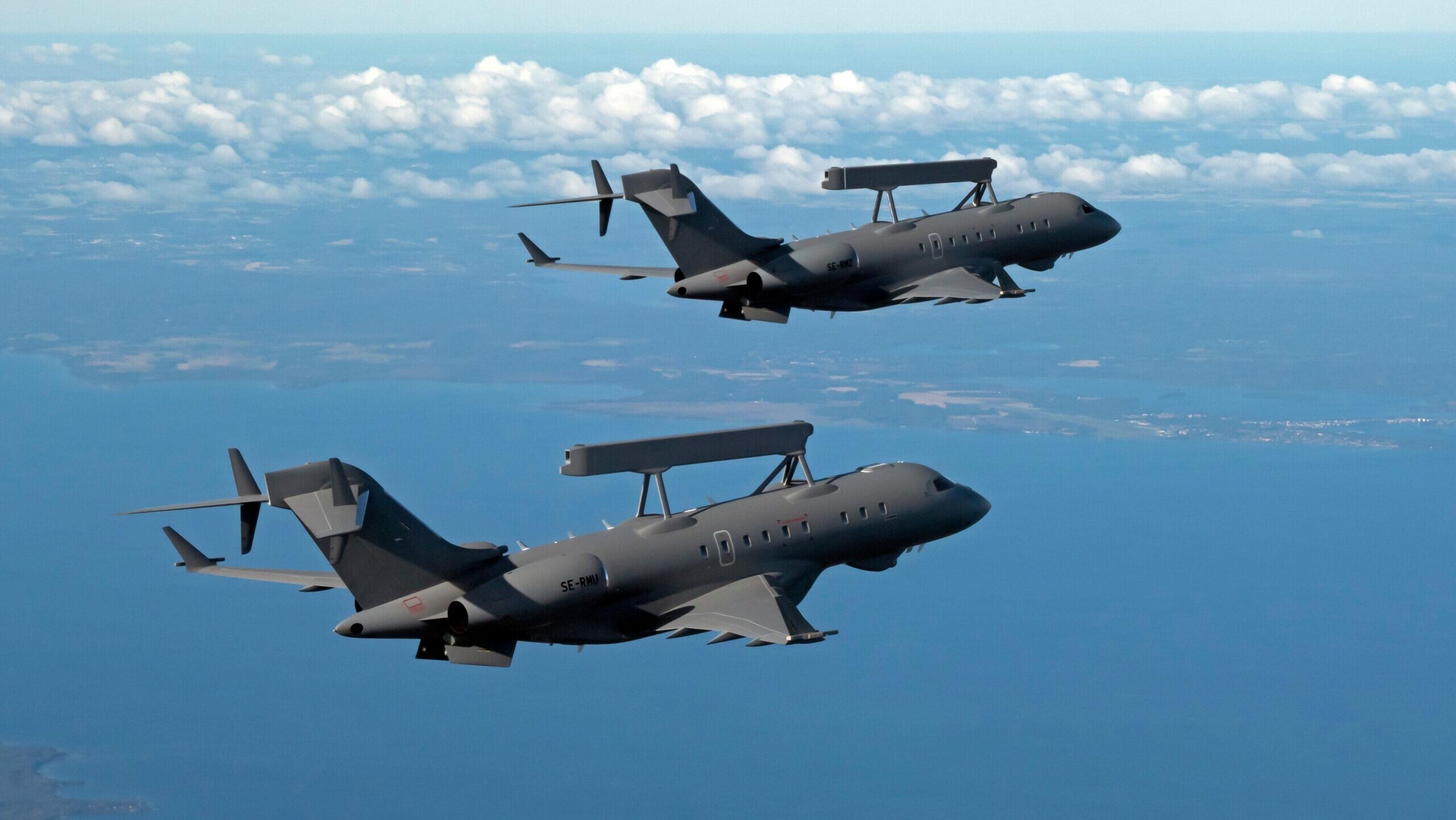
Saab GlobalEye Airborne Early Warning and Control (AWACS) aircraft lost out to Boeing made E-7 Wedgetails in a recent NATO procurement (Saab)
BELFAST — After losing out to Boeing on NATO’s initial Allied Future Surveillance and Control (iAFSC) program to replace E-3A Sentry Airborne Warning and Control System (AWACS) aircraft, Saab CEO Micael Johansson voiced frustration, alleging that alliance procurement authorities rushed a quick decision in favor of the E-7 Wedgetail out of fear of the planes being delivered behind schedule.
“I didn’t like that [procurement] process,” Johansson told Breaking Defense in a one-on-one interview last month. “We were asked to put in our offer, and then they [the NATO Support and Procurement Agency] didn’t really go into discussion with us, because they had already decided they had to go and buy Wedgetail, and they had to do it quickly because otherwise they wouldn’t get capability until 2032.”
He claimed that Saab could have delivered a “whole fleet” of GlobalEye AWACS aircraft, derived from Bombardier Global 6000 business jets, “way before” Boeing’s E-7 schedule.
The alliance selected the E-7, which is based on 737 Next Generation commercial airliners, in November, opting to acquire six aircraft, the first of which the alliance said will be “ready for operational duty in 2031.” Additional airframes, however, could be eventually purchased to replace the full E-3A fleet of 14 planes, expected to retire in 2035.
“We could have provided them with a lot more aircraft earlier, so I am disappointed, but these are political decisions,” added Johansson.
Johansson rejected the idea that the decision was related to pricing. “We are more cost efficient than them [Boeing],” he explained. “We have the aircraft [GlobalEye] in production right now, we can meet schedules that are much shorter than Wedgetail can.”
It’s not the first time Johansson has been left frustrated by what he saw as political influence in acquisition decisions. He previously suggested major F-35 fifth generation fighter jet contracts that beat out Saab’s Gripens across Europe had been politically motivated. But in criticizing Boeing, Johansson threatens to upset a working relationship with the US manufacturer as the two partner on the US Air Force’s T-7A Red Hawk advanced jet trainer program. Saab produces fuselages for the aircraft at its West Lafayette, Ind., production facility.
Boeing referred Breaking Defense to NATO for comment for this report.
The NATO Support and Procurement Agency (NSPA) “closely assessed the RFI/P&A [price and availability] responses as well as capabilities of firms identified on NSPA Source File and through defence industry research, including comparable acquisition in US and UK,” said a NSPA spokesperson in a statement today. “It was assessed that Boeing E-7A AEW&C (Wedgetail) is the only known military-off-the-shelf/non-
The spokesperson also identified six key performance parameters that were “particularly important” to assessing competitor offers: Aircraft endurance and capacity with a focus on mission duration, crew size, number of operator workstations and crew rest, mission systems (uniform display size and resolution), surveillance coverage, growth capacity aligned to size weight and power issues, design and deliver risks and survivability.
As part of its competitive bid, Saab had offered a “different approach” to GlobalEye’s Concept of Operations (CONOPS), which Johansson called “a bit complicated,” though did not go so far as to suggest such a complication had counted against the company when offers were assessed by NATO.
A price disagreement between Boeing and the US Air Force is threatening development of two E-7 rapid prototypes and risks wider disruption to the service’s longer term ambition of fielding a fleet of 26 aircraft by 2032. The US Air Force has been told by Boeing to expect nonrecurring development costs of the aircraft to be twice as much as initially forecast, according to Aviation Week.
On a more promising note for Boeing, the manufacturer expects annual production of the platform to reach six per year by the end of the decade. Boeing has confronted setbacks on a UK E-7 acquisition however, ranging from COVID-19 work force issues to supplier lead time increases and an in-service contract agreement delay. Wedgetail has also been sold to Australia.
Meanwhile, GlobalEye has been ordered by Sweden and the United Arab Emirates. The aircraft has been designed to offer airborne, maritime and ground surveillance within a single platform and is integrated with a new Erieye ER (Extended Range) radar capable of operating in “severe clutter and jamming environments,” according to Saab company literature.
Air Force awards SNC $13B contract for new ‘Doomsday’ plane
The win is a major victory for the firm in a competition that saw the surprise elimination of aerospace giant Boeing.


























